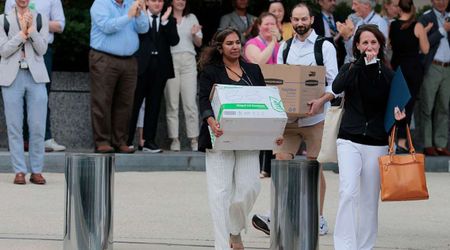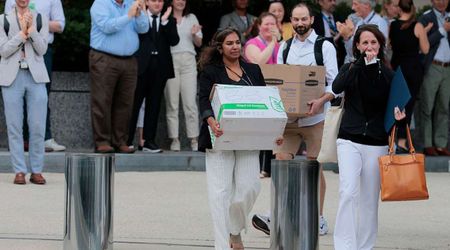Americans Don't Have Enough in Savings Accounts to Last a Few Months; Here are Factors Behind it

The crash of multiple banks in the past year rattled the American financial sector and also spooked consumers, as lenders were not able to keep up with the demand for withdrawals and ran out of cash. According to new federal data, many bank accounts in America currently hold less cash than US consumers would need even for a few months. The median transaction account balance in the U.S. currently sits between $8,000, which is insufficient. Transaction accounts include checking, savings, money market as well as prepaid debit cards, as per Survey of Consumer Finances data.
While the money that consumers should keep in savings varies on several factors like income as well as expenses, it's always a good idea to separate 15% from your pre-tax income.

According to experts, it's also very important to start paying down debt and having goals for debts. "Once you have no debt, set goals, such as a six-month emergency fund, and save towards that goal," says Jay Zigmont, Ph.D., CFP, founder of Childfree Wealth in Mississippi.
Another great way to save is by keeping money in a high-yield savings account or even in a certificate of deposit to boost your savings.
According to SCF data, the average or mean balance is around $62,410 in bank accounts. SCF also says that Couples with no children had the highest median balance, while single parents had the lowest.
The study also revealed that households that had older individuals had higher account balances. They were twice as high as younger households even though the gap has narrowed since the last year. It was seen that hold hold which comprised individuals in the age range of 45 to 54 had higher median balances than those with members ages 55 to 64.
Apart from age, education level is another factor that correlates with bank account balance. The largest median balance jump is from those who have a college degree to those with a bachelor's degree.
So far, Income has the most consequential effect on savings. The median account balance for those with annual income in the top range is at least $77,800 more than those in the income tiers below.
Race and ethnicity also played a role in the account balance fluctuations. Those who are classified as non-Hispanic whites had higher median and mean account balances compared to those in the Hispanic and Black categories. This reflects a racial wealth gap it has been seen that white families hold more than give time the wealth of any typical Black or Hispanic family.
According to a recent Consumer Expenditure Survey published by the U.S. Bureau of Labor Statistics, an average consumer had around $10,228 in their bank accounts after taxes in the year 2022. It's pretty understandable, with the high inflation. Having said that, with proper planning, saving even in times of inflation is possible. The rule of thumb is to aim to save three to six months' worth of expenses. Meanwhile, here's a savings calculator to help you establish a budget, which is still, step one!



















